#chipa art?
Text

raaadaaarrrrr. radar wake up its 3:29 am. can yuo call the president of france.we have something to say to him. While youre at it we have this great idea for a prank can you get us some flammable liquids for it. dont worry about it
#i like that traphawk canonically implied to do this frequently so i drew a thang.yay#chipa art?#mash#hawkeye pierce#trapper john mcintyre#radar o'reilly
127 notes
·
View notes
Text
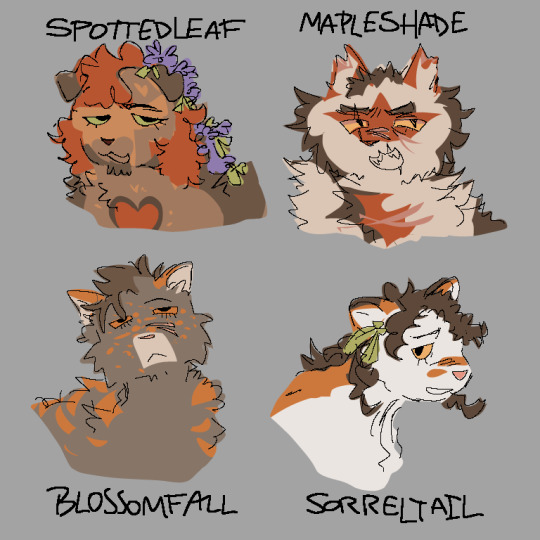
challenge by @booksofstars !!! absolutely winged these but i had so much fun
119 notes
·
View notes
Photo

pov you fall into a hole and find a cowherd and his cow that does not like him that's been stuck there for over a hundred years and doesn't know it.
95 notes
·
View notes
Text

My cookies never turn out like Tumblr pictures 😂
#they are definitely underdone in the middle but thankfully i dont care#and i only did 2.25 instead of 2.5 cups of choc chips and there were still too many chips#as i the dough wont form because it's all chocolate chipa#and no milk chips because i don't keep that shit in my pantry#alex does food#as i typed this the ones left in the oven burnt 😆#my dark cookie sheet got them done in about 10 min#but the light was still struggling at 13#and for the record i have yet to use a recipe that uses brown butter and be worth it ¯\_(ツ)_/¯#and i think the toll house recipe is best#last thing i will do the lost art of mixing cookies by hand as long as i can
10 notes
·
View notes
Text
Paraguay

Welcome to Paraguay, a vibrant country with a rich history, diverse culture, and an emerging economy. Situated in the heart of South America, Paraguay is bordered by Brazil, Argentina, and Bolivia. Its capital and largest city is Asunción, which is also the country's cultural and political center.
Paraguay has a fascinating history, dating back to the pre-Columbian era when the Guarani people ruled the region. The country was colonized by Spain in the 16th century, and its subsequent history is marked by struggles for independence, political instability, and internal conflicts. Today, Paraguay is a democratic republic with a president as its head of state and government.
The economy of Paraguay has been growing steadily in recent years, largely due to its agricultural exports, including soybeans, beef, cotton, and wheat. The country also has a growing services sector and increasing levels of foreign investment. However, the country still faces challenges related to income inequality, poverty, and unemployment.
Paraguay has a diverse population, with a majority identifying as Mestizos (people of mixed European and Indigenous American ancestry) or Indigenous. Spanish and Guaraní are the official languages, with Guaraní being spoken by a large proportion of the population. Religion is an important aspect of Paraguayan culture, with Roman Catholicism being the dominant faith.
The geography of Paraguay is characterized by its unique landscape, including the Gran Chaco region to the west and lush rainforests, wetlands, and rivers to the east. The country is also home to diverse flora and fauna, including jaguars, pumas, toucans, and howler monkeys. Visitors to Paraguay can explore its natural wonders, from the UNESCO-listed Jesuit Missions to the stunning Itaipu Dam.
Paraguayan cuisine reflects its diverse cultural influences, with dishes like chipa (a type of bread), sopa paraguaya (a cornbread stuffed with cheese), and tereré (a traditional drink made with yerba mate). The country also has a vibrant music and dance scene, including traditional folk music and the popular polka-style genre known as guarania.
Whether you're interested in history, nature, culture, or cuisine, Paraguay has something to offer. From exploring the ruins of colonial-era Jesuit missions to visiting modern museums and art galleries, you'll find plenty to discover in this beautiful and unique country.
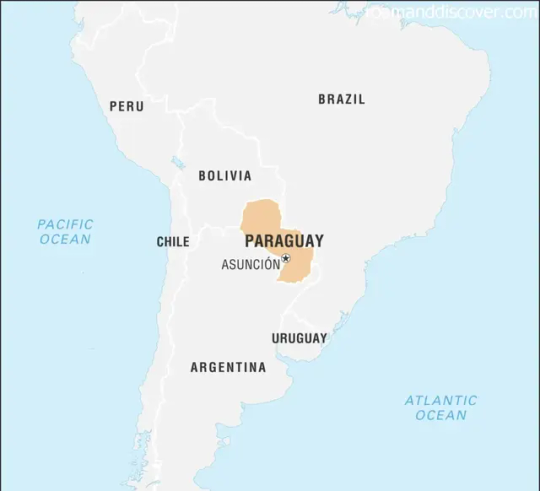
Etymology
The name Paraguay originates from the Guarani language, which was spoken by the indigenous people of the region long before the arrival of the Spanish. The word 'Paraguay' means 'river that gives birth to the sea,' referencing the Paraguay River that flows through the heart of the country and eventually reaches the Atlantic Ocean.
The name is significant to the country's history and culture because it reflects the strong indigenous influences that have shaped Paraguay's identity. The Guarani language is still widely spoken in Paraguay and has been recognized as an official language of the country alongside Spanish.
The river itself has also played a crucial role in Paraguay's history, as it served as a major transportation route for the Guarani people and later became a key artery for trade and commerce during the colonial period. Even today, the Paraguay River remains an important source of irrigation and power for the country's agriculture and industry sectors.
The name Paraguay therefore represents both the country's indigenous roots and its enduring connection to the land and the natural resources that have sustained its people for centuries.
History
Paraguay has a long and fascinating history, with evidence of human habitation dating back thousands of years. Before the arrival of Spanish colonizers in the 16th century, the region was home to various indigenous groups, including the Guarani people, who still form a significant part of Paraguay's population today.
In 1537, Spanish explorer Juan de Salazar founded the city of Asuncion, marking the beginning of colonial rule in Paraguay. The region became a hub for Jesuit missionaries, who established missions throughout the country and played a significant role in shaping Paraguayan culture and society.
During the 19th century, Paraguay gained independence from Spain and faced a series of conflicts, including a devastating war with neighboring countries Argentina, Brazil, and Uruguay. The War of the Triple Alliance, as it was called, resulted in significant loss of life and territory for Paraguay.
Following the war, the country experienced a period of instability and political upheaval. In the early 20th century, Paraguay underwent a period of modernization, with advancements in education, healthcare, and infrastructure.
The mid-20th century saw several changes in Paraguay's political landscape, including the ascent of dictator Alfredo Stroessner, who ruled the country for over three decades until he was ousted in a coup in 1989. Since then, Paraguay has made significant strides in strengthening its democracy and promoting human rights.
Today, Paraguay is a diverse and vibrant country, with a rich cultural heritage and a bright future ahead. From its indigenous roots to its modern-day innovations, Paraguay's history is a testament to the resilience and strength of its people.
Geology
Paraguay is situated in the heart of South America and is known for its diverse landscapes and unique geological features. The country has a wide variety of rock formations dating back millions of years, leading to an interesting geology that is rich in mineral resources. Some of the main geological features that can be found in Paraguay include:
- Granitic rock formations in the eastern part of the country
- Volcanic rock formations in the western part of the country
- The Matto Grosso plateau in the northeast
- The Chaco plain in the west, composed of sandstone, siltstone, and mudstone
- The Rio Paraguay, the second-largest river in South America, which runs from north to south across the country
The landscape of Paraguay has been heavily influenced by geological events such as volcanic activity, earthquakes, and the shifting of tectonic plates. These processes have created the country's distinctive topography, which consists of rolling hills, vast plains, and deep river valleys.
Despite being relatively small in size, Paraguay is home to various mineral resources, including iron ore, limestone, clay, and manganese. The mining industry in the country has grown in recent years, with increased investment in exploration and extraction activities.
The geological features of Paraguay have contributed greatly to the country's agricultural industry. The fertile soil created by the rock formations has allowed for a variety of crops to be grown, including cotton, sugarcane, soybeans, and corn. the presence of underground water resources, as well as the Rio Paraguay, has provided irrigation for the agricultural sector.
Paraguay's geology is a fascinating aspect of the country's natural landscape and plays a significant role in shaping its unique culture and economy.
Geography
Paraguay is a landlocked country located in the heart of South America. With an area of 406,752 square kilometers, it is the 4th largest country in the region. Paraguay is bordered by Argentina to the south and southwest, Bolivia to the northwest, and Brazil to the east and northeast. The Paraguay River, which flows through the country, divides it into two regions: the Chaco and the Eastern Region.
The Chaco region covers approximately 60% of the country's territory. It is a vast, sparsely populated area with an arid and semi-arid climate. The Eastern Region encompasses the remaining 40% of the country's land area. This region is home to the majority of the country's population, and it features a subtropical climate and fertile soil.
Paraguay's land area is characterized by its diverse landforms, including hills, plateaus, plains, and marshes. The highest point in the country, Cerro Tres Kandú, stands at 842 meters above sea level. The Paraná and Paraguay rivers, which flow through the country, are important natural resources for the country's economy and transportation system.
Paraguay is also home to a variety of natural resources, including forests, minerals, and hydroelectric power. The country's forests cover approximately 47% of the country and are home to a range of plant and animal species. Paraguay's mineral resources include iron ore, manganese, limestone, and gypsum. The Itaipu Dam, located on the Paraná River, is one of the largest hydroelectric power plants in the world and provides electricity to both Paraguay and Brazil.
Paraguay's geography plays a significant role in shaping the country's economy, culture, and everyday life. Its land area, borders, landforms, and natural resources all contribute to the unique identity of this South American nation.
Ecology
Paraguay's unique ecology is home to an incredible diversity of environments and ecosystems. The country features several ecoregions, including the Chaco, Atlantic Forest, and Pantanal wetlands.
The vast and rugged Chaco region is the largest ecoregion in Paraguay and is characterized by dry forests, savannas, and scrublands. The region is home to some of Paraguay's most iconic animals, such as jaguars, pumas, and tapirs, as well as several indigenous peoples who have lived in the area for thousands of years.
The Atlantic Forest ecoregion consists of dense, humid forests that stretch along the eastern coast of South America. While much of the original atlantic forests in Paraguay have been destroyed due to agriculture and logging, efforts are underway to restore and conserve these forests.
The Pantanal wetlands, located in the southwestern corner of Paraguay, are one of the largest freshwater wetlands in the world. The region is home to an abundance of wildlife, including caimans, capybaras, and giant otters, as well as a diverse array of bird and fish species.
Paraguay's ecosystems also include several important rivers, including the Paraguay River and the Pilcomayo River. These rivers provide vital resources for the country, including water for irrigation, transportation, and hydroelectric power.
- Some of the most important national parks and wildlife reserves in Paraguay include:
- Ñacunday National Park
- Defensores del Chaco National Park
- Cerro Cora National Park
- Mbatovi Nature Reserve
Unfortunately, Paraguay's ecosystems face several environmental challenges, including deforestation, water pollution, and soil erosion. However, efforts are being made to address these issues through conservation and sustainable development initiatives.
Paraguay's ecology is incredibly diverse and fascinating, with a wide range of environments and species to discover and explore.
Biodiversity
Paraguay is home to a diverse range of flora and fauna, due to its varied landscapes and climate. The country has an impressive 30 National Parks, which protect a significant number of endangered species.
One of the most unique species found in Paraguay is the Chacoan Peccary, which is only found in the Chaco region of Paraguay, as well as parts of Bolivia and Argentina. The Chacoan Peccary is one of three species of peccaries that are native to South America, and is considered to be endangered.
Another endangered species found in Paraguay is the Jaguar. Although still present in the country, the Jaguar population has decreased dramatically due to habitat loss and hunting. Efforts are currently being made to protect this iconic species in Paraguay.
The Atlantic Forest, which runs along the country's eastern border, is a hotspot for biodiversity, and is home to several endemic species of plants and animals. One such species is the Black-fronted Piping-guan, a bird that is only found in the Atlantic Forest and is considered to be endangered.
Paraguay is also well-known for its rich plant life, including several species of palm trees, cacti, and orchids. In fact, Paraguay is home to the national tree, the Lapacho, which is known for its beautiful purple blooms.
The country's wetlands, such as the Pantanal, are home to a variety of aquatic species, including the Yacare Caiman, which is a species of crocodile that is found in the region. Paraguay is home to several species of freshwater turtles, including the Chaco Side-necked Turtle.
Paraguay's biodiversity is truly impressive, and efforts must be made to protect the country's unique flora and fauna for future generations to enjoy.

Climate
Paraguay's climate is mostly subtropical, with mild winters and hot summers. The annual average temperature ranges between 22 to 29 °C (72 to 84 °F), with the hottest months being December to February.
The country's climate is influenced by the humid winds from Brazil, which contribute to high humidity levels and occasional torrential rains that can cause floods. The rainy season, which lasts from October to February, can bring rainfall of up to 1500 mm, while the dry period, which lasts from June to August, can be quite cold, with temperatures falling as low as 0°C (32°F) in some areas.
The climate patterns in Paraguay strongly influence everyday life, especially in terms of agricultural activities, which are the backbone of the country's economy. The rainy season can lead to soil erosion and sometimes crops can be affected by excessive moisture. On the other hand, dry seasons can cause droughts, which can also damage crops and livestock.
Despite these challenges, Paraguay has a diverse range of agricultural products thanks to its climate. The country is known for producing cotton, soybeans, sugar cane, and cattle, among other crops. The climate also supports a variety of fruits, such as oranges, bananas, and mangoes.
understanding the climate patterns in Paraguay is essential for agriculture and daily life in general.
Environmental Issues
Paraguay is a country that is known for its natural beauty and rich biodiversity. However, with the rapid growth of the country's economy, it has also been facing a number of environmental challenges that threaten its ecological balance. One of the main environmental issues facing Paraguay is deforestation. According to the World Wildlife Fund, Paraguay has one of the highest rates of deforestation in the world.
The primary driver of deforestation in Paraguay is the expansion of agricultural land, particularly for the production of soybeans. This has resulted in the clearing of vast areas of the country's Atlantic Forest, one of the most biodiverse regions in the world. Deforestation not only leads to the loss of important habitats for wildlife but also contributes to climate change by releasing large amounts of carbon dioxide into the atmosphere.
In addition to deforestation, Paraguay is also facing other environmental challenges such as soil degradation, water pollution, and illegal wildlife trade. These issues are often linked to the country's agricultural practices, which tend to favor intensive and unsustainable production methods.
Despite these challenges, Paraguay has made significant efforts to address its environmental issues. The country has implemented policies and programs aimed at promoting sustainable agriculture, protecting its forests and wetlands, and improving its waste management systems.
One such program is the Paraguay Forest Partnerships project, which aims to promote sustainable forest management practices and reduce deforestation rates. The country has also established protected areas such as the Mbaracayu Biosphere Reserve and the San Rafael National Park to conserve its rich biodiversity.
Paraguay has also taken steps to improve its waste management systems by investing in infrastructure and promoting recycling. The country currently has a national solid waste management plan in place, which aims to reduce the amount of waste sent to landfills and promote the use of renewable energy sources.
The government of Paraguay has also signed international agreements such as the Paris Agreement, which aims to combat climate change by reducing global greenhouse gas emissions. In addition, the country has implemented a number of renewable energy initiatives, such as the construction of the Itaipu Hydroelectric Dam and the promotion of solar power.
Despite these efforts, there is still much work to be done to address Paraguay's environmental challenges. The country must continue to improve its waste management systems, promote sustainable agriculture, and protect its remaining forests and wetlands.
By addressing these issues, Paraguay can not only protect its natural heritage but also improve the well-being of its people and contribute to the global effort to combat climate change.
Politics
Paraguay operates as a representative democratic republic. The President of Paraguay serves as both the head of state and the head of government. The President is elected for a five-year term and has the power to appoint cabinet members, judges, and other political officials. The legislative branch is composed of a bicameral National Congress, made up of the Chamber of Deputies and the Senate.
The Chamber of Deputies consists of 80 members who are elected for five-year terms, while the Senate is made up of 45 members who serve six-year terms. Both chambers of the National Congress work together to create and pass legislation.
The judicial branch is composed of the Supreme Court of Justice, which has nine justices appointed by the President and confirmed by the Senate. In addition to the Supreme Court, there are several lower courts, including civil, criminal, and labor courts.
Paraguay's government is organized at both the national and local levels. The country is divided into 17 departments, each governed by an elected governor. These departments are further divided into districts, each overseen by a mayor. Municipalities are responsible for managing local public services, such as sanitation, transportation, and education.
Throughout its history, Paraguay has had a tumultuous political past. The country endured civil wars, political coups, and authoritarian regimes. In the early 20th century, a revolution led to the establishment of a more democratic government. However, in 1954, General Alfredo Stroessner came to power and established a dictatorship that lasted 35 years.
Stroessner was removed from power in 1989, and since then, Paraguay has made significant progress in strengthening its democratic institutions. However, corruption and political instability continue to be major issues facing the country's political system, with concerns over the influence of drug cartels and organized crime groups in the government.
Economy
The Paraguayan economy is largely based on agriculture, with soybean farming being the primary contributor to the country's GDP. However, there has been a push in recent years to diversify the economy and reduce dependence on agriculture.
Read the full article
0 notes
Photo

Algunas cositas por aquí. 💚🐈✍💟 #art #architecture #pencildrawing #buenastardes #photography #chipa https://www.instagram.com/p/BsjPFWXFdMI/?utm_source=ig_tumblr_share&igshid=1f9fjfh1k9ipn
1 note
·
View note
Text


⚜️⭐️🦚👺♠️👩🤡🃏👸♥️🎲🍺
#Stars#Carnival#Circus#Amusement Park#Casino#Masquerade#Masquerade Mask#Peacock#Mask#Peacock Mask#Spade#Clown#Jester#Poker Chipa#Dice#Beer#Party#Art#App#Adult Colouring Book#Adult Coloring Book#Tap Color - Color By Number#My Post#My Upload#My Pictures
1 note
·
View note
Video
Graffiti Rooftop Bombing And Legal gold Piece writing Full Process by Knic
#graffiti#graffitiart#art#street#bombing#bomg#montanacans#handstyle#action#tagging#spray#graffitshop#Chipa#knic#Knic057
0 notes
Text
Navigating the Venice Architecture Biennale Opening Weekend: Between Observing and Belonging
Thursday, 5th June 2014. 3:30pm
Here we are! After trying to climb three different fences, we have finally made our way into 2016 year’s Venice Architecture Biennale opening event. We managed to find an access point that was hidden enough from intrusive eyes as well as from the hyper-controlled entrance of the Giardini della Biennale, located at the south eastern end of the island. Our objective is to reach the pavilion of Great Britain’s press preview, which kicks off at 4pm and to which we have not been invited.

A large crowd waiting to hear the presentation for the opening of the Home Economics exhibition at the Great Britain pavilion (2016). | Photo © Cristiano Corte
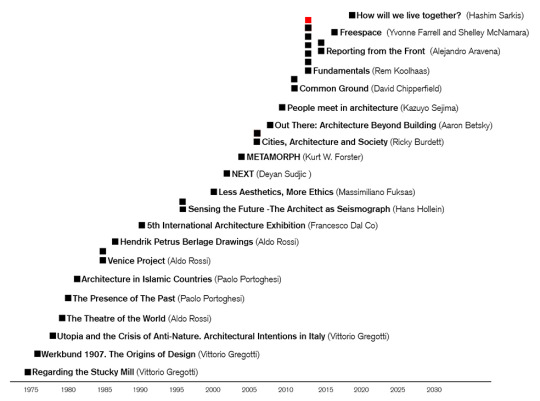
Read also “In Vino Veritas Biennale Style!”
Guests are slowly congregating around the national building, where the event is about to start. This year’s chosen theme is A Clockwork Jerusalem, commissioned by the British Council and analysing Britain’s Modernism in cities and the legacy of planning, a subject that my friends and I hold a certain fascination for. The ribbon cutting ceremony is usually an opportunity for the curators to explain the concept behind the project and to contextualise it within the broader theme of the biennale, this year being Fundamentals. But a pavilion opening is also much more than that. It is a chance to feel part of an international community of architects and urbanists that come together to celebrate the best out there; to belong.

Walking along one of the main avenues in the Giardini della Biennale. | Photo © Lavinia Scaletti
As in many opening ceremonies, the pavilion’s entrance is packed with guests that you can barely hear the speaker. You start looking around the audience, checking faces to see if some are recognisable. When you finally come across a familiar one, a feeling of complicity arises. Is it because as visitors we feel that we are in the right place at the right time, being one of the very first to look around the long-waited exhibition? Or is it because the opening weekend is generally attended through an invite only? Funnily enough, at that specific event we did not speak to anyone other than amongst ourselves.
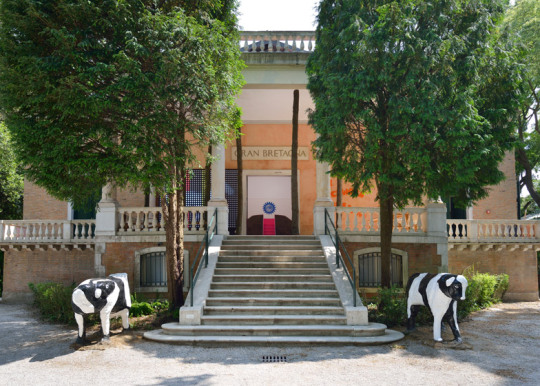
Great Britain pavilion entrance during the 2014 Venice Architecture Biennale, with the exhibition noticeable through the door. | Photo © Cristiano Corte
It was two weeks before our final exam of our architectural education. The decision to travel was not taken lightly, as we had to weigh out between the risk of losing precious study time to which our future careers seemed to depend on, or taking part in the celebration of this renowned exhibition, where architects from all corners converge. We chose the latter, but with the foolish condition of working in between one event and another. As expected, our laptops stayed in the suitcase for the entirety of our stay.
The Biennale usually lasts from May to November and we could have attended any other week within that period. Why did we feel the need to go at this specific time? As students, we tended to see the Biennale as the grand event of the architecture scene, a reference point in the professional and social life which follows for the next two years to come, and one definitely not to be missed. It certainly comes with a level of spectacle that showcases a generally forward-thinking and diverse work. And what a better way to observe all of this than with the theatrical Venetian backdrop! That year, Rem Koolhaas, one of the most acclaimed figures in the contemporary architecture scene, was curating the Venice Architecture Biennale. Perhaps this was also an occasion to come across him or any other prominent architect?

People gathering at a ceremony event during the 15th Venice Architecture Biennale in 2016, curated by Alejandro Aravena under the theme Reporting from the Front. | Photo © Lavinia Scaletti
The opening ceremonies seem to be over for the day. My friends ask, ‘what next’? We are told there is a specific bar on via Giuseppe Garibaldi, a few minutes away from the Giardini, where biennale attendees slowly proceed to. We decide to join the gathering too and end up sitting on the pavement amongst many others. The place is bustling with people that the drinking activity spills out onto the street, creating a composed party atmosphere. Throughout the evening, we move from one place to another in a similar procession, following the crowd, strolling through the city.
It is interesting to think how most of our journeys during that particular weekend seemed to be somehow planned. While you had to make clear decisions about what pavilion ceremony to be at, the schedule for the evening and night activities felt more settled. Despite our evident tiredness, we decided to attend most of them, at times engaging in conversations with others. The mere fact of being there, surrounded by architecture gossip and informal talk, made us feel gratified.
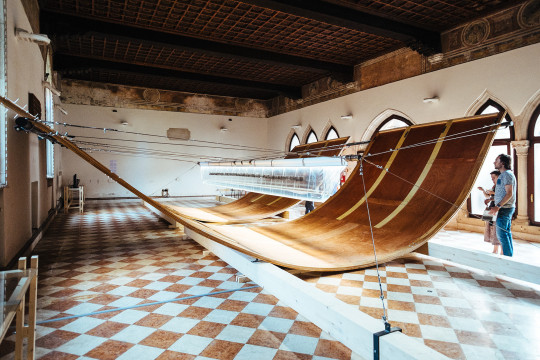
The large scale shell structure designed and built for the project Aqua Alta inside the building hosting the Paraguayan Pavilion (2014). | Photo © Pedro Kok
Through the remainder of the weekend, we decide not to visit the primary Biennale sites and instead explore the events around the city, being easier to attend and usually not requiring a formal invite. Partly accidentally and party planned, we venture out into the building hosting the Paraguayan pavilion, a country where I spent most of my childhood. The opening ceremony is on and the atmosphere cheerfully busy. We start chatting to other students and architects who are each of them giving us an interpretation of this year’s project Aqua Alta, curated by Sergio Ruggeri and designed by architect Javier Corvalan and the Colectivo Aqua Alta, with the participation of students. While gathering around a large-scale wooden shell structure, we hear the exhibition message is to emphasise the importance of water in Paraguay and of the ‘less is more’ philosophy. This seems to fit perfectly with the main Biennale theme.
It is a pleasant surprise when you step into these less publicised locations, somehow out of the main Biennale itinerary, and generally requiring an intentional diversion. While we assisted at a few pavilion openings within the principal sites during our stay, very few gave us that level of intimacy experienced at these smaller events, where we were able to get a thorough understanding of the concept behind each project. Often less busy, these out-of-boundary ceremonies present an opportunity for meaningful conversations and encounters. Attending the Paraguayan exhibition launch, did we feel less of an observer and more part of a group? Possibly. And we even got to try some chipa guazu, a national dish made of corn that I had not eaten for over 10 years!
***
VAB 11: Lavinia Scaletti
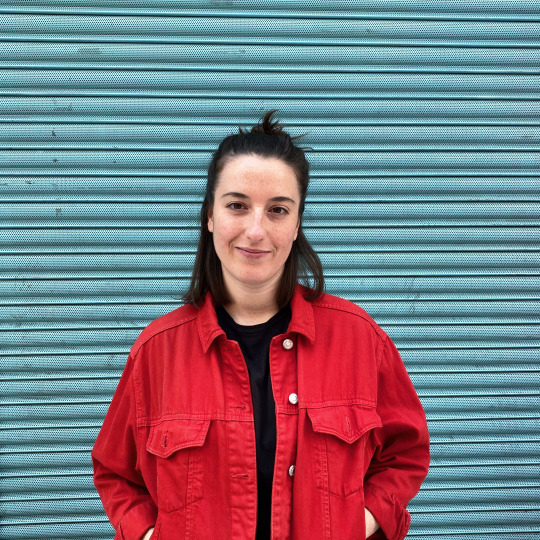
Lavinia Scaletti is an urban designer living in London. She currently works in the public sector for a local authority, developing place-based strategies and frameworks for different neighbourhoods and giving design advice. Her interest in city planning is driven by her desire to create more sustainable and playful places for people. She holds a master’s degree in architecture from the Royal College of Art, where her projects investigated the themes of housing and urban regeneration. She previously worked at public realm and urban design consultancy Publica and has professional experience in France and Chile. In 2016 she was a selected fellow in the EU-funded Future Architecture Platform and her work has been featured in exhibitions across Europe, including Italy, Spain, Austria and Slovenia. She is passionate about urban culture, particularly traditional markets and the life between buildings.
4 notes
·
View notes
Photo
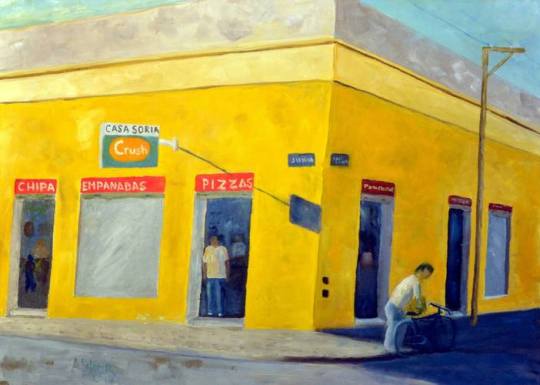
Casa Soria - Pizza, Asher Topel
Is the business that was next to my house when I was little boy, used to buy pizza and especially Chipa., it was in Corrientes Argentina , during the sixties
https://www.saatchiart.com/art/Painting-Casa-Soria-Pizza/657127/3641704/view
2 notes
·
View notes
Text
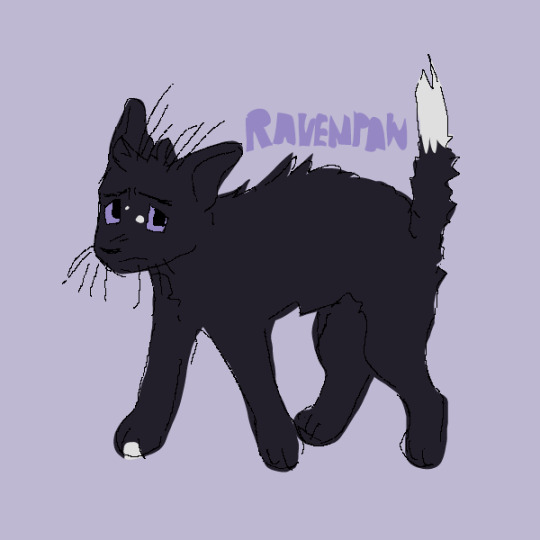
really loved this guy
42 notes
·
View notes
Video
Parabéns Mato Grosso do Sul 🎈🎈🎈🥳 #sousulmatogrossense #happybirthday #42anos #🎈 #🥳 #historia #beleza #natureza #ceuzinho #povoacolhedor #cultura #arte #turismo #gastronomia #felicidade #alegria #terere #pantanal #bonito #campograndems #vacarias #churrasco #chipa #soba #saltenha #camposverdes #gado #muitogado #muitogadomesmo #paraguai🇵🇾 #bolivia🇧🇴 #tuiuiu #onca #oncapintada #araras #quatis #capivara #meums (em Luna Park) https://www.instagram.com/p/B3etj7bgeia/?igshid=1hhxzl7ppuvxg
#sousulmatogrossense#happybirthday#42anos#🎈#historia#beleza#natureza#ceuzinho#povoacolhedor#cultura#arte#turismo#gastronomia#felicidade#alegria#terere#pantanal#bonito#campograndems#vacarias#churrasco#chipa#soba#saltenha#camposverdes#gado#muitogado#muitogadomesmo#paraguai🇵🇾#bolivia🇧🇴
1 note
·
View note
Photo


美しい丘で君と
Pixiv ID: 69849791
Member: 1273764 - chipa
※Posted with the artist’s permission
~Please ask the artist first if you want to repost the artist's art~
24 notes
·
View notes
Text



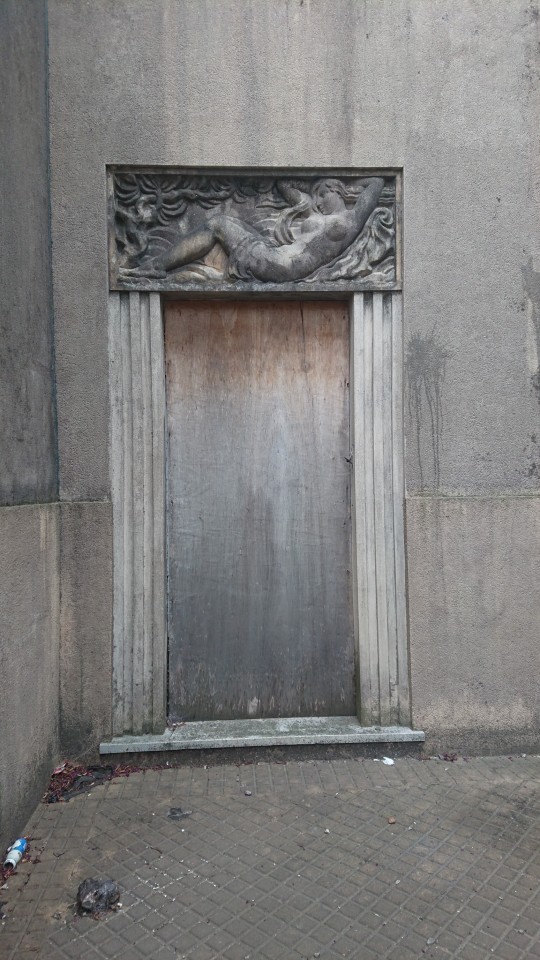

Carta para nadie, o una página más en mi diario virtual:
Hoy salí a la calle, fui a comprar los chipa que venía viendo la publicidad hace bastante tiempo. Lloré todo el camino, pero por lo menos encontraba cosas lindas para ver. En frente a la casa de la chica que los hacía, estaba el gatito de la foto, mientras esperaba a que baje, lo acaricié un buen tiempo. Ella llegó y fui a buscarlos, me dijo que me había visto por su ventana con el gatito y que el siempre estaba ahí en ese lugar. También tenía que cambiar un regalo de navidad, desde que tengo memoria, mi mamá insiste en regalarme ropa que no me gusta (y esto es un problema de niña blanca). En el camino empecé a llorar de nuevo, y ya había hablado con mi psicóloga hoy, pero volví a escribirle y le dije que no podía dejar de pensar en suicidarme. No, obvio que no fue por lo del regalo, fueron otras cosas. Ella siempre logra calmarme, también los gatitos y las cosas lindas de la calle, y siempre me sorprende mi angustia con su fuerza y capacidad de hacerme mierda. Pensé en ese momento que quería que me ahorquen y una fuerte sesión de bdsm, y creo que ya no puedo hacer eso con la única persona que si podía, debería preguntarle que piensa. Escribo todo esto porque no sé a quién contárselo sin que parezca que estoy haciendo un monólogo, tampoco sabría de que manera incorporaría esto a mi arte, pensándolo como una forma de comunicar. Tardo mucho en poder comunicar lo que siento. Me puse contenta porque en el local de ropa, al que yo jamás hubiera entrado, pude encontrar ropa que me gustó y quedó bien. Hice un esfuerzo por no hacer muy evidente ante la vendedora que nada de lo que ahí había me gustaba o emocionaba mucho, la mayoría de la ropa me parecía horrible. Mi peso se mantiene por debajo de los 60 hace varios meses, no me esfuerzo porque eso pase. Cuando tenía 15 podía pesar 57 y 62 en el mismo mes, quizás hasta en la misma semana. El año pasado creo que llegué a 54, sentía todos los huesos de mi espalda y me daba impresión, tenía miedo de tener anorexia nerviosa, pero mi psico me recordó que las anorexicas no son conscientes de su flacura. Ahora no me voy a pesar, ayer comí helado y hoy chipa, seguro cene fruta o algo fresco. Estoy contenta con haber comido eso, porque era lo que necesitaba. Me siento como un niño, creo que nunca dejé de serlo. Me cuesta mucho la respuesta al "cómo estás"
1 note
·
View note
Photo

No les pasa que algunas fotografías los teletransportan? Bueno, no me den bola tenía que hacer memoria en el celular jajaja 😂💚🐱 #architecture #art #likebuenosaires #mifotoenbaires #fideos #igerbsas #buenosaires #buenastardes #photooftheday #photographer #chipa https://www.instagram.com/p/BnraLdHHT7v/?utm_source=ig_tumblr_share&igshid=1fgpmlcfr17y9
#architecture#art#likebuenosaires#mifotoenbaires#fideos#igerbsas#buenosaires#buenastardes#photooftheday#photographer#chipa
1 note
·
View note
